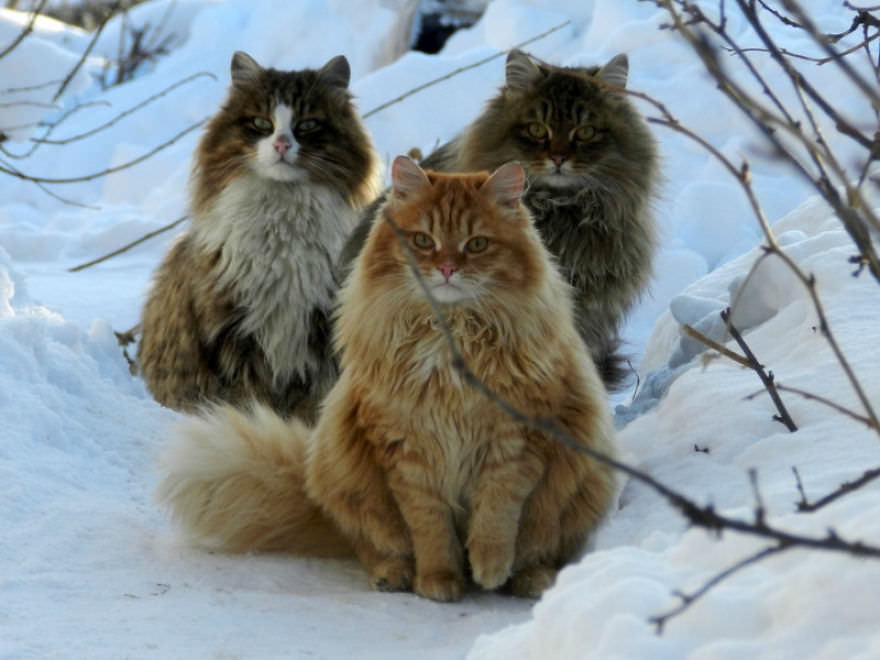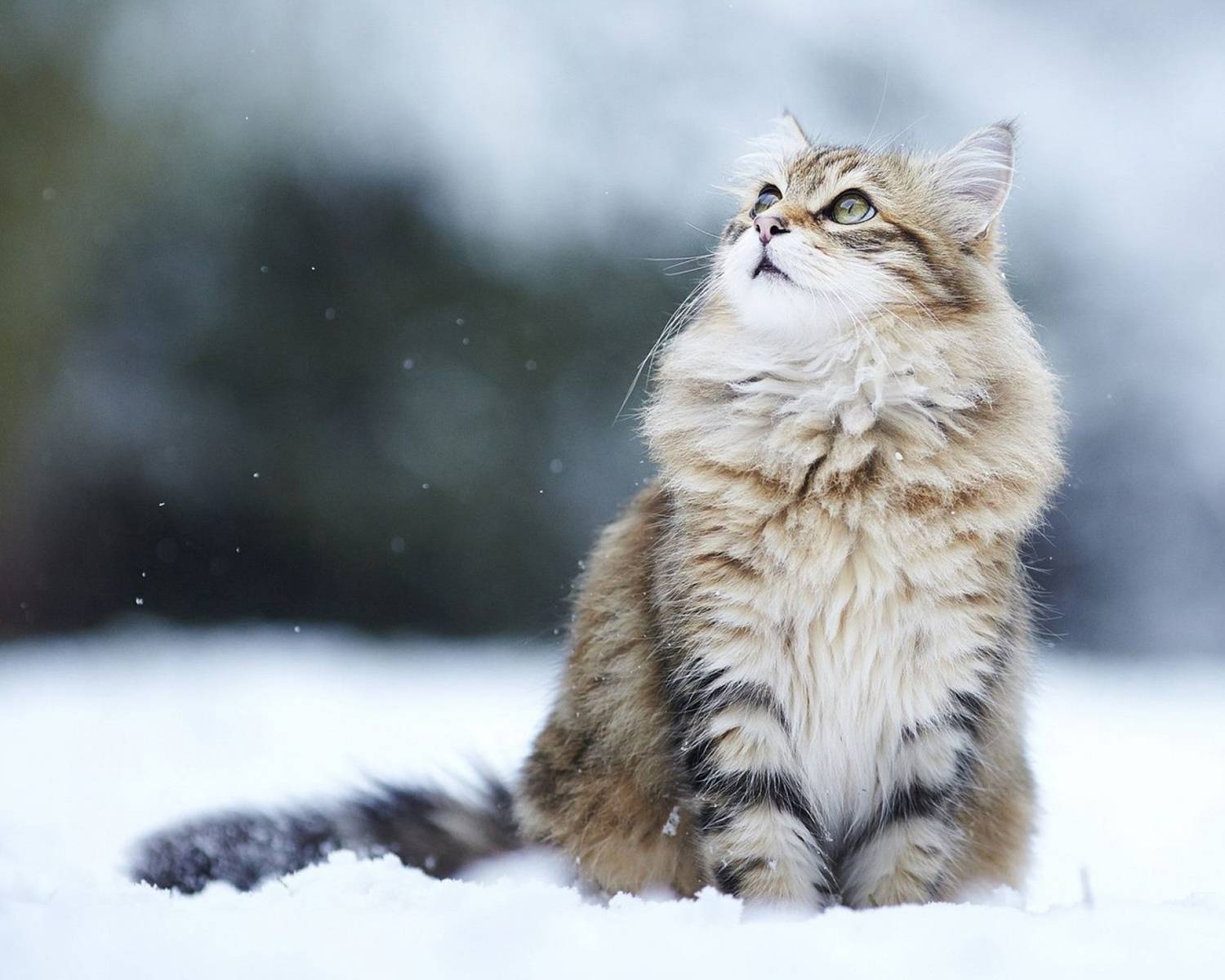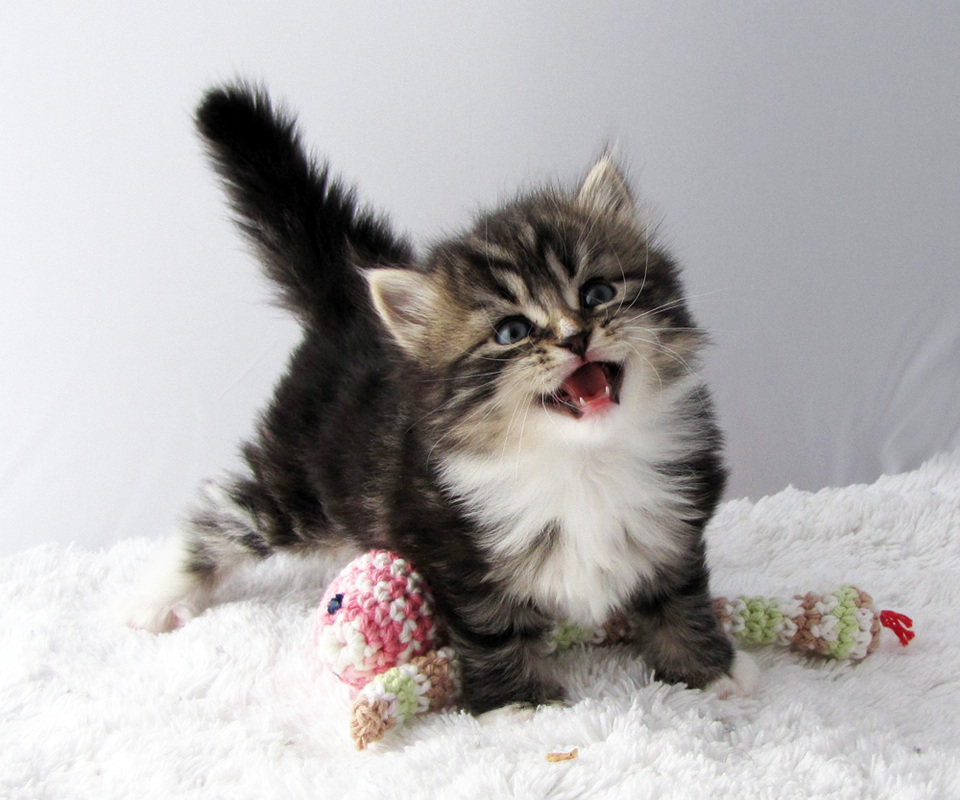In This Article
Introduction of Siberian Cat
The Siberian cat, with its lush semi-longhaired coat, dramatic facial ruff, and affectionate personality, makes an eye-catching addition. Native to Russia, Siberian cats are considered a national cat of Russia and are well suited to harsh cold climates.From medium to large in size, they are known for being the largest pedigree breed of cat. Their distinctive features include a triple coat of fur, full ruff around the neck, furry hind legs/paws, and bushy tails. Color variations of Siberian cat range across black, white, tabby, bi-color and more. Their friendly, playful and intelligent characters are popular in many places.
Siberia’s native cats have different sizes, especially between the males and females. Besides gender differences, Siberians exhibit size variations among the breed based on factors like breeds and age. Understanding the typical sizes of this forest cat throughout its lifespan can help prepare prospective owners for properly caring for one of these beauties.
Male vs Female Siberian Cat Size Difference
Like many mammalian species, male Siberian cats tend to reach a greater body size than females. While a female Siberian will weigh 8-15 pounds on average, males generally fall in the 15-20 pound range when fully grown. These muscular, barrel-chested cats carry more weight than their frame suggests however, with a hefty, solid feel. Males also measure longer than females, averaging 16-23 inches from shoulders to tail tip compared to 14-19 inches for the ladies. And male cats tend to have broader, rounder heads with more defined jawlines and a full neck ruff. Their facial features and neck size appear more pronounced.
In essence, Siberian cat gender determines hormonal influences like testosterone amounts that stimulate increased skeletal growth rates, muscularity, and weight in males. So while both rank as large-breed cats, adopting a male cat likely means welcoming a more substantial, long-bodied feline into your home. So, you should consider adult cat size when providing food, furnishings, and accommodations.
Different Size Of Siberian Cats in Different Breed Lines
 In addition to gender differences, distinct size variations occur in Siberians based on geographic breed lines. Knowing the background of your cat’s lineage can provide hints at whether a smaller or more monumental Siberian size is in the cards. These bloodlines produce Siberians on the upper end of the height and weight scales.
In addition to gender differences, distinct size variations occur in Siberians based on geographic breed lines. Knowing the background of your cat’s lineage can provide hints at whether a smaller or more monumental Siberian size is in the cards. These bloodlines produce Siberians on the upper end of the height and weight scales.
Size of Siberian Cat in Moscow
Siberian catteries based in Moscow or around the surrounding central Russian area tend to produce smaller, more compact-bodied cats on average. The cold climate and limited early resources cultivated moderately-sized working cats rather than angling for extremes in size. Yet what Moscow Siberians may slightly lack in scale, they compensate for in lavish coat quality. In comparison, cats descended from breeding programs in St Petersburg and the surrounding northwest tend to run larger.
Size of Siberian Cat in St Petersburg
St Petersburg experienced more active cat fancy activity early on. Breeders could focus efforts on bringing out the Siberian’s genetic potential for grander size. Today St Petersburg Siberian cats sit at the upper end of the height and weight spectrum.
Size of Siberian Forest Cat
 A relatively recent offshoot, the Siberian Forest Cat further amps up the breed’s ancestral wildness and hearty size. Breeders carefully select for Siberia’s native forest cat characteristics, producing long-legged, lynx-ear tipped cats designed to thrive in frigid conditions. These cats harken back more to the breed’s earliest wild roots, which yield supremely large cats.
A relatively recent offshoot, the Siberian Forest Cat further amps up the breed’s ancestral wildness and hearty size. Breeders carefully select for Siberia’s native forest cat characteristics, producing long-legged, lynx-ear tipped cats designed to thrive in frigid conditions. These cats harken back more to the breed’s earliest wild roots, which yield supremely large cats.
Size of Siberian Cat Changes Through Their Growth
While gender and ancestry provide clues to the eventual measurements, a Siberian cat’s size also changes markedly throughout life.
Kittens open their eyes at around 2 weeks old, weighing just a few ounces and measuring roughly 6 inches long. However rapid development soon sees them doubling or tripling in size week by week. By 4 months old, Siberian kittens generally measure 14-18 inches long and weigh 5-7 pounds. Siberian cats then experience another growth spurt. Males in particular can nearly double in size between 6 months to 2 years old. By adulthood at age 3, Siberian cats reach maximum size in terms of weight and muscular maturity. Yet subtle body lengthening may continue up to age 5.
 So in summary, Siberian cats are born tiny but grow exponentially as kittens before their growth plates close and size peaks between 1-2 years old once sexual maturity finishes.
So in summary, Siberian cats are born tiny but grow exponentially as kittens before their growth plates close and size peaks between 1-2 years old once sexual maturity finishes.
Adjusting Diet of Siberian Cat By Age
Making sure your Siberian cat’s diet aligns with the changing needs of each life stage plays a key role in allowing them to reach optimal dimensions.
In the first month, kittens nurse milk from their mother. By 5-6 weeks, supplement this with wet food like soaked kibble to support weaning and train for independent eating. Kittens have voracious appetites to fuel rapid growth and require frequent small meals throughout the day.
By 6 months to adulthood, establish scheduled mealtimes of high-quality kitten, then adult cat foods. Adults only need one to two meals daily to maintain ideal weight once full size is achieved. Provide constant access to fresh water. Adding supplements can help address the unique nutritional requirements of senior cats over age 7 years.
With their impressive scale and presence, Siberian cats never fail to make an attraction. Understanding typical sizes for males, females, and various ages allows new cat owners to fully appreciate the majesty of these incredible Russian cats. Properly nourishing them through each life stage ensures achieving a healthy size from tiny, fluffy kitten into the muscular, magnificent adult cats greeting us with affection each day.
Summary
Siberian cats hail from Russia and impress with their large, muscular build and friendly personalities. Several factors like genetics, gender, breeds and age groups contribute to the wide size range seen in the breed. From the considerable gender differences to changes throughout kittens’ rapid-fire development then leveling off in adulthood, Siberian cats awe us with their impressive physiques. Appreciating the typical sizes of these loving forest cats at various life stages and among breed lines allows owners to know more about the Siberian cats.
